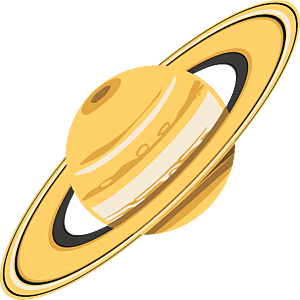The Downlink • Dec 25, 2020
So long, 2020, and thanks for all the space
Space Snapshot

NASA’s Hubble Space Telescope recently captured this image of two storms on the ice giant Neptune. The larger storm (top center), which is wider than the Atlantic Ocean, has been moving across the planet in unpredictable ways. Hubble is the only instrument with the sharpness and sensitivity in visible light to track features like this on the outer planets. Image credit: NASA et al.
You love space, now take action
This weekly newsletter is your toolkit to learn more about space, share information with your friends and family, and take direct action to support exploration. Anyone can subscribe at planetary.org/connect to receive it as a weekly email.
Mission Briefings


NASA’s James Webb Space Telescope deployed its sunshield for the final time on Earth. The successful test (pictured) keeps the telescope on track for launch in October 2021. Webb’s sunshield blocks heat from the Sun and the telescope’s own instruments, allowing it to see the cosmos in infrared light. Image credit: NASA/Chris Gunn.

New details have emerged about the extended mission of China’s Chang’e-5 spacecraft. After dropping off its Moon samples at Earth, the probe left for one of several locations where Earth and the Sun’s gravity balance in a way that spacecraft can orbit the locations for long periods of time. Chang’e-5 appears to be headed to one optimal for solar observations, and may later move to another to search for near-Earth asteroids.

NASA formally authorized work for future missions to return Mars samples to Earth. The Planetary Society urged Congress to support this step in early 2020, and has issued a statement celebrating the new milestone. NASA’s Perseverance rover, which arrives at Mars in February, will collect and store the samples. The agency is teaming up with the European Space Agency for at least two missions to retrieve the samples and return them to Earth by the early 2030s.
From The Planetary Society


As 2020 ends, there’s a lot to celebrate! In a special year-end impact report webinar, hear from The Planetary Society’s top leadership about our greatest accomplishments of the year, and how your support made it all possible. Plus, check out the results of our Best of 2020 public vote to see the images, moments, and milestones that meant the most to people like you this year. Pictured: One of our favorite images of the year, taken by NASA’s Juno spacecraft at Jupiter. Image credit: NASA/JPL-Caltech/SwRI/MSSS.

NASA just got a new budget, and it funds several key Planetary Society priorities. The U.S. Congress provided a 3% increase to the space agency in 2021, which funds the start of a Mars Sample Return mission, continued operation of the Curiosity rover and Odyssey orbiter, and continued development of the Roman Space Telescope—all of which were top priorities for our advocacy program this year. The legislation also called for NASA to launch the NEO Surveyor mission by 2025, addressing another high priority for the organization.
What's Up

As Saturn and Jupiter move farther away from Monday’s conjunction, they also creep closer to the western horizon in the early evening sky. Mars shines in the evening and into night. Venus greets early risers in the early morning sky, making a short appearance on the eastern horizon before dawn. Learn more at planetary.org/night-sky.
Make 2021 Even Brighter

When you invest in The Planetary Fund today, your donation will be matched up to $100,000 thanks to a generous member.
By contributing before the end of the year, you can double your impact and power our work to:
- Explore Worlds by increasing discoveries about our solar system and beyond.
- Defend Earth by decreasing our risk of being hit by an asteroid or comet.
- Find Life beyond Earth by elevating the search as a space exploration priority.
Will you help launch us into 2021 filled with hope, new projects, and exciting space missions? Please donate today and your impact will be doubled! Thank you for your generous support.
Wow of the Week

Planetary Society member Brandon Manning took this spectacular photo of the Milky Way galaxy from a dark sky site at Lake Tahoe in the United States. "I brought out my star tracker to play and see what my camera could see," said Manning. About 4 minutes of exposure captured this dizzying collection of stars, as well as the Lagoon and Trifid Nebulae. You can see more of Brandon’s astrophotography work on his Instagram account at instragram.com/manningbc.
Do you have a suggestion for the Wow of the Week? We’re looking for space-related art, music, gadgets, quotes, fashion, burning questions, brief sci-fi passages, or anything else that will make our readers go “Wow!” Send us your idea by replying to any Downlink email or writing to [email protected], and please let us know if you’re a Planetary Society member.


 Explore Worlds
Explore Worlds Find Life
Find Life Defend Earth
Defend Earth


